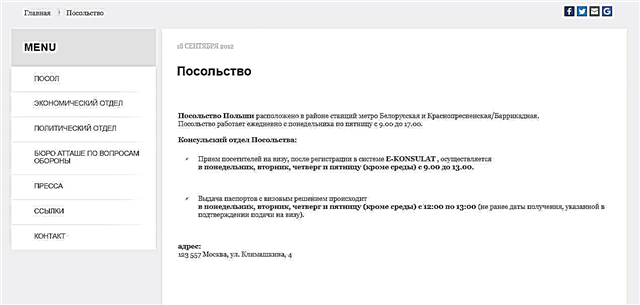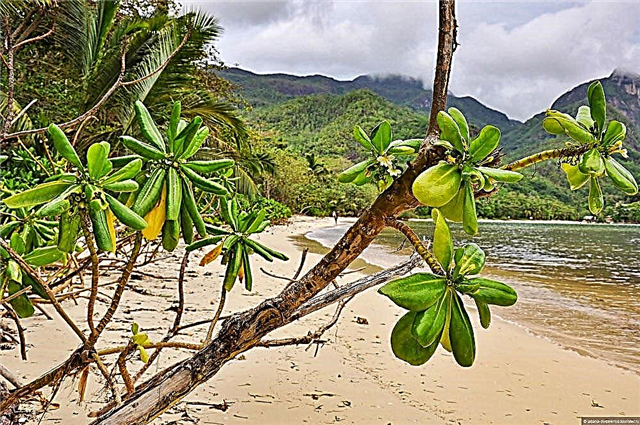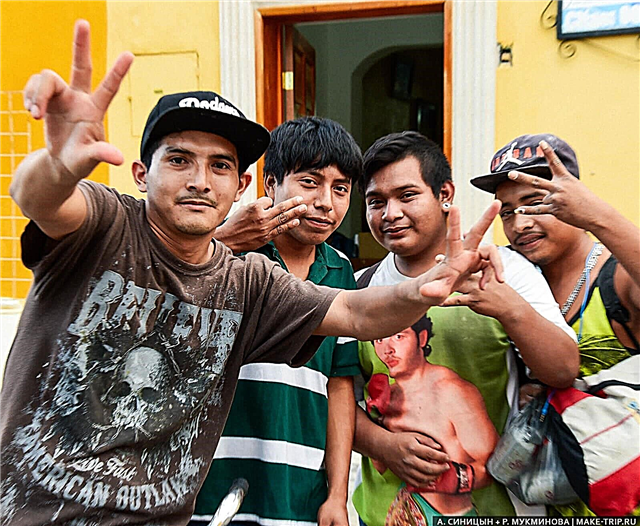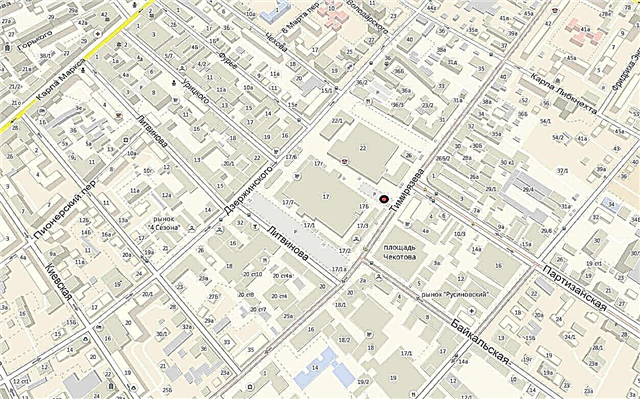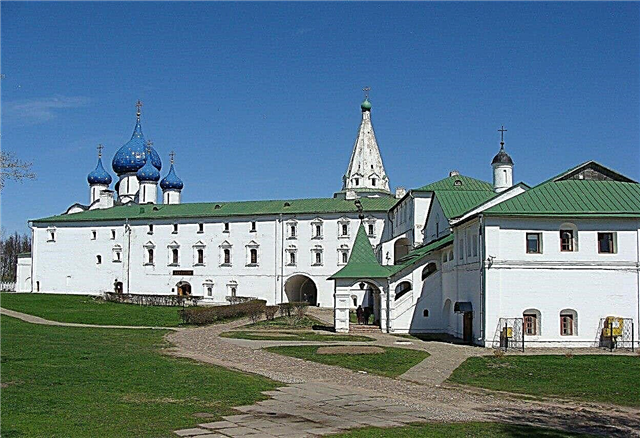Suzdal can be called a living embodiment of the history of Russia; it bears the titles of a city-museum and a city-reserve. There are monuments of ancient Russian architecture recognized as World Heritage: the Kremlin and the Spaso-Efimiev Monastery. Perhaps, there is not a single Suzdal street, from where the domes of ancient temples and monasteries are not visible. Not only the beauty of architecture is striking, but also the reverent attitude towards it: almost all the churches have been restored, services are being conducted in them.
The Kamenka River made a special contribution to the appearance of the city. It is on its banks that the most picturesque sights are located: the Museum of Wooden Architecture, the Alexander and Pokrovsky Monasteries, and many churches. There are good views of the river and the main historical sites from the Kremlin ramparts, equipped with a pedestrian zone. It is interesting to visit the Trade Rows, which have preserved the atmosphere of an old fair.
The most interesting and beautiful places
Text, photos with names and descriptions of the best sights of Suzdal. He will help you plan routes to explore the top places of the city in 2-3 days.
Suzdal Kremlin
The history of ancient Suzdal is closely connected with the Kremlin, the main defensive bastion, created during the reign of Vladimir Monomakh. The heart of the Kremlin is the Nativity Cathedral. Opposite it is a 17th century bell tower with chimes, on which the clock is marked with letters. The ensemble of the ceremonial courtyard is completed by the Bishops' Chambers of the 15th - 18th centuries. Today, a museum-reserve was founded here, all the objects of the Kremlin are included in the World Heritage List.

Read about all the top places in the region: the main attractions of the Vladimir region.
Museum of Wooden Architecture
The open-air museum is located on the banks of the Kamenka River. A total of 18 exhibits are presented, which have been collected for a long time throughout the Vladimir region. These are wooden structures of the 18th - 19th centuries, built with an ax, practically without any other tools. The museum is arranged like a real old village: temples and a chapel, a small street with peasant houses. Inside, themed exhibitions are arranged, ancient household items are collected.

The main tourist complex "Suzdal"
One of the largest tourist sites of the Golden Ring. The complex was founded in 1977 with the aim of organizing tourist services at the highest level. Today, it includes a hotel with 199 rooms and 97 townhouses, 7 restaurant themed zones, a concert hall, an equipped camping, a large wellness center with a swimming pool, fitness equipment and a spa. Also, for recreation and outdoor events, there are platforms on the banks of the river.

Sights of the Suzdal Kremlin
The main tourist sites in the historical core of the city are located in the Kremlin and in the territory bounded by earthen ramparts.
Theotokos-Nativity Cathedral
The main temple of the ancient city is located on the territory of the Kremlin. The cathedral was built from 1222 to 1225, after the burning of the city by the Tatars in 1445, its upper part was lost. The upper part was completed in 1528. Inside, frescoes from 1233 have been discovered, wall paintings from the 15th and 17th centuries, and the unique golden gates of the 13th century have been preserved. The cathedral was the burial vault of princes and the supreme clergy. The temple is active, services are conducted in it, access is paid.

Wooden Nikolskaya Church
The wooden church of the 18th century was transported to Suzdal from the Vladimir hinterland, the village of Glotovo. It was installed in the western part of the Kremlin. In 1960, everything was disassembled in detail, restored and reassembled in a new place. The basis of the building is a chopped cage on a high basement, surrounded by an open gallery. There is also a refectory and a faceted altar part. It is a separate part of the open-air museum and one of the symbols of the city.

Assumption Church
Initially, the stone church was erected at the end of the 17th century, later, in 1719, it was rebuilt. This appearance has survived to this day: red stone walls with white decor, the main dome is covered with a drum with a small dome. The architectural style belongs to the Naryshkin Baroque, which is not typical for Suzdal. The temple is open to the public, you can venerate the relics of St. Arseny of Elasson. It is located on the Kremlin street.

Bishops' chambers
One of the main parts of the Kremlin, consists of several buildings: a refectory, a house church, residential chambers, household buildings. On one side, the chambers are fenced with a white wall with gates, on the other - with earthen ramparts. The first buildings were built in the 15th century; they acquired their final appearance in the 17th - 18th centuries. All buildings are connected by stairs and passages, richly decorated galleries and even secret passages.

Nativity of Christ and Nikolskaya churches
The winter Nativity of Christ and the summer Nikolskaya churches are located near the Kremlin rampart, in the southeast. Both buildings date back to the 18th century. The Church of the Nativity was built of bricks, the bulk of which was completed as a residential building. There is an icon-painting workshop in the temple, you can visit an excursion, try to paint a fragment of a fresco. Summer St. Nicholas Church is wooden, elegantly decorated with carvings. Both churches became the backdrop for scenes in the film "The Marriage of Balzaminov".

Fire Tower
One of the most noticeable adornments of the ancient city is the fire tower, which is located at the fire station and still serves its intended purpose. It was built in 1890, when the fire brigade was located in the old stables. In 2004, the fire brigade received a building, built exactly according to projects of a century ago. The entire architectural ensemble fits well into the panorama of Suzdal.

Earthen shafts of the Suzdal Kremlin
One of the first fortifications of the Kremlin, were created in the XI century, under Vladimir Monomakh. Almost all the ramparts have survived, except for the northern side, which was washed away by the waters of the Kamenka River. Studies have shown that the basis is made of wood, and the shaft itself is made of clay. The total length of the fortifications is 1.5 km. If you go upstairs, you will have a good view of the river and the Kremlin. Today it is a good route for a sightseeing walk.

Ancient monasteries of Suzdal
Historical monasteries are active and have become museum sites.
Monastery of Saint Euthymius
The foundation of this monastery dates back to 1352. It was built on the left bank of the Kamenka as a fortress, for protection from the enemy. The entire ensemble of the monastery is included in the World Heritage List. The name is given by the name of the first abbot of the monastery, after his canonization. In the 18th century, there was a dungeon at the monastery; in Soviet times, prisoners were also kept here. Today it is a large museum complex. The expositions tell the stories of icons, applied art, printing. The collection of bells is interesting.

Monastery of the Robe
The monastery was founded in 1202. The stone buildings that have survived to this day are dated back to the 16th century. The monastery ensemble includes the Cathedral of the Robe Deposition of 1520 - 1560, the two-hipped holy gates of 1688, the Venerable Bell Tower and the Sretenskaya Church of the 19th century. The place attracts both pilgrims wishing to venerate the relics of Euphrosyne of Suzdal, and lovers of history and architecture. There is a hotel at the monastery, located in the historical center.

Vasilievsky monastery
A majestic fenced white-stone monastery rises on a hill to the east of the Kremlin. It was founded in the 13th century as a military fortification, later transformed into a holy monastery. According to legend, the people of Suzdal were baptized at this place. The architectural ensemble is represented by the Cathedral of Basil the Great of the 17th century, the bell tower of the 19th century, the Sretenskaya Church of the 17th century.The men's monastery resumed its work in 1995, with a hotel working there.

Alexander monastery
The snow-white ensemble with green vaults and modest domes of the main church is located on the left bank of the Kamenka. Founded in 1240 by Alexander Nevsky. Later there was a convent, the Big Lavra. In the 17th century it was completely burned down by the Poles. The main buildings, the Ascension Church and the bell tower were built in the 17th century, and the fence and gates in the 18th century. Since 2006, a men's monastery has been opened here, it is easy to get to it from Lenin Street.
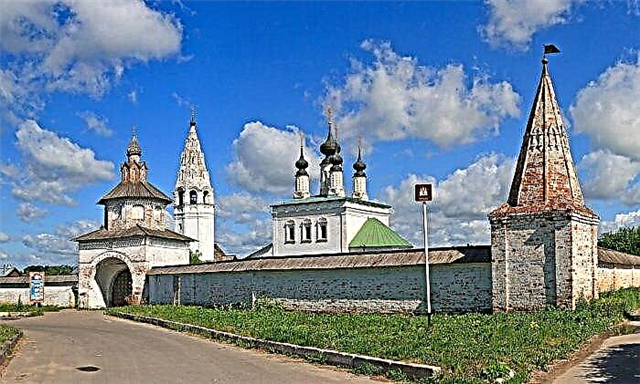
Pokrovsky monastery
The women's monastery in the northern part of the city, on the right bank of the Kamenka. It was founded in 1364, but the architectural appearance was formed in the 16th century. Representatives of noble families, tonsured into nuns, were kept here, their names were inscribed in the tomb, under the building of the Intercession Cathedral. Many of them are buried here. In addition to the three-domed cathedral, the Tent Bell Tower, the Refectory Chamber, the Church of the Conception, the Holy Gates, and the Annunciation Church are located here.

Suzdal Posad and the Torgovaya Square ensemble
The main attractions located near the Kremlin and on the shopping square of Suzdal.
Shopping arcade
In the heart of Suzdal there is an ancient building of the Trading Rows of the early 19th century in the Empire style. The long gallery, divided by arches and double columns, has a portal gate in the center, surmounted by a high spire. The main entrance is decorated with a gilded falcon, the symbol of the city. In the 70s, the eastern gallery was restored, and a symmetrical western one was built. Here and now a stormy trading life is in full swing.

Resurrection and Kazan churches
A paired ensemble of churches located on the main square of the city, not far from the Trade Rows. The Summer Church of the Resurrection at Torgu was created in 1720 and has white stone walls with small arched windows. Its high tiled bell tower dominates the entire square. The Kazan Winter Church was added in 1739 and is a low church with a side-altar. The relics of John and Fyodor of Suzdal are kept here.

Tsarekonstantinovskaya and Sorrowful churches
Tsarekonstantinovskaya church was built at the beginning of the 18th century, it became the last five-domed church in Suzdal. The white walls of the temple are decorated with a wide cornice with kokoshniks, the windows have graceful figured ends. The summer church is complemented by a winter church of the icon of the Sorrowful Mother of God of the end of the 18th century. A high hipped bell tower with elegant facades and vaults is attached to it from the west.

Entry-Jerusalem and Pyatnitskaya churches
The church, consecrated in honor of the entrance to Jerusalem, is located in the southeastern part of the Market Square, near the Kremlin ramparts on the banks of the Kamenka. Representing a typical summer temple, it has the shape of a quadrangle decorated with a cornice and three portals above the entrances. Previously, the temple was combined into a single complex along with the warm Pyatnitskaya church and bell tower. The bell tower and the fence have not survived, and both temples are a magnificent ensemble.

Church of the Beheading of John the Baptist
The old church is located on Lenin Street south of Torgovaya Square, near the Kremlin ramparts. It was built in 1720, almost simultaneously with Nikolskaya, and has a simpler design. The quadrangle of the temple is supplemented by a semicircular apse, next to it is a massive bell tower, of the same height as the main volume. The scenes of the film "The Marriage of Balzaminov" were filmed against the background of the church. According to legend, the relics of the blessed Trofim of Suzdal are kept in one of the walls.

Lazarevskaya and Antipievskaya churches
The Church of St. Lazarus became the earliest in the city settlement. Built in 1667, it was the first to receive a five-domed ending. Chetverik has different portals on three facades and three apses on the fourth side. The white walls are complemented by ornate cornices. Nearby stands the lower warm Antipius church from 1745. Its bright red and white bell tower complements the overall ensemble. The churches are located between the Market Square and the Monastery of the Robe.
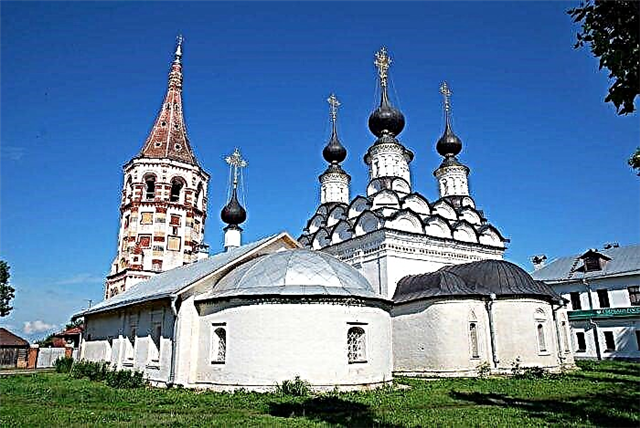
Kresto-Nikolskaya church
The church of 1770, consecrated in honor of Nicholas the Wonderworker, stands on the site of the chapel of the Holy Cross, hence the name Kresto-Nikolskaya. It is located on the north side of the Trade Rows. An interesting feature of the church: it has a different appearance from different sides. The mustard yellow walls are decorated with white tracery, which gives a very elegant look. A chapel is attached to the apse in memory of the predecessor of the temple.

Church of Kosma and Damian on Yarunova Gora
Yarunova Gora is a small elevated place on the banks of the Kamenka River, revered by the pagans. Here in 1725 the Church of Kozma and Damian was built, on the site of an ancient monastery and an old wooden church. The small temple has a very picturesque look, the walls of the main volume are laconically decorated, a bell tower with a hipped roof "pipe" and platbands on the windows are attached to it. There are few tourists here, you can visit the temple in a relaxed atmosphere.

Sights of the Zarechnaya side of Suzdal
The main objects of tourist interest, located on the right side of the Kamenka River.
The Church of the Sign and the Church of the Robe on Mzhar
The Mzhara River is a small tributary of the Kamenka. On its bank, at the very entrance to Suzdal, there was the former Vladimirskaya outpost. Here you can visit the picturesque architectural ensemble: the summer Church of the Sign, the warm Robe Deposition and the free-standing bell tower. All buildings date back to 1749 - 1788. The summer temple is two-tiered, with a large apse and a massive porch. The bell tower is three-tiered and decorated with pilasters.

Church of Boris and Gleb on the Borisov side
At this place, on the right bank of the Kamenka, even before the Time of Troubles there was the Borisov Monastery and the Borisov Sloboda. Presumably, a stone temple was built here in 1749. It is made in the Moscow Baroque style, uncharacteristic for Suzdal: the red-brick walls are complemented by white carved decor, and a four-tier bell tower with high openings adjoins the temple. Previously, he had a paired wooden church, which has not survived to this day.

Church of Elijah the Prophet on Ivanova Hill
The temple stands in the bend of Kamenka, on a hill called Ivanova Gora. Ilyinsky meadow nature reserve is located nearby. Previously, there was a winter church of St. John the Theologian nearby; together with the refectory and the bell tower, it was lost in Soviet times. The Elias Church of 1744 has a typical for the 18th century "octagon on a quadruple" structure, crowned with a small cupola. In 2010, a large-scale restoration took place, the bell tower and the refectory were also restored.

Ilyinsky meadow and the Kamenka river
The Kamenka River can be called the main artery of the ancient city, its whimsical turns determined the place of the Kremlin and other important objects. The river in these places is extremely picturesque, and the bank opposite from the Kremlin occupies a protected meadow with an area of more than 40 hectares, this is the largest of the eleven meadows allocated in Suzdal. Through it you can walk along the path from the Elias Church. There are rare plants and birds, mainly black-headed gull.

Epiphany and Christmas churches in Kozhevennaya Sloboda
The ensemble of the summer and winter churches was built in 1739 - 1781 in the former settlement of Suzdal tanners. Here, on the right bank of the Kamenka, there used to be wooden churches. The Summer Epiphany Church is larger, has a curved eight-pitched roof and a small two-tier dome. The windows are framed by semi-columns and kokoshniks. Christmas is decorated in a simpler manner, has a slender bell tower.

Temple of the Tikhvin Icon of the Mother of God
The stone temple was built in the Kozhevennaya Sloboda, presumably at the end of the 17th - beginning of the 18th century. Previously, there was the St. Andrew's Monastery, destroyed by the Poles. The temple is not functioning, only the foundation of the building has survived to this day - a massive quadruple, decorated with half-columns and cornices. The windows are decorated with triplets under a common casing.The altar and the bell tower were lost.

Peter and Paul and Nikolskaya churches
A high five-domed temple stands at the entrance to the Intercession Monastery. This is the Peter and Paul Church, built in 1694. It is the main one in the paired architectural ensemble, which complements the winter St. Nicholas Church. The location is a low meadow plain on the banks of the river, around a picturesque panorama of temples and monasteries located on the heights.

Sights of Skuchilovaya Sloboda
Posad house
The house, presumably built in the 17th - 18th centuries, is a rare example of stone architecture. Then some of the wealthy townspeople could afford to build an expensive stone dwelling. The house consists of two stands. The one that faces the road is more ancient, made of thicker stone. The second part was added later, it is two-story. The museum exposition inside the house recreates the atmosphere of the townspeople of that time. Located next to the Smolensk Church.

Smolensk and Simeonov churches
The architectural ensemble is located in the vicinity of the Spaso-Efimiev Monastery, on the territory of the former settlement of Skuchilikha. The Summer Smolensk Church stands out against the background of the surrounding cityscape with five blue domes on high drums. Nearby there is a hipped-roof bell tower with a thin spire. The winter church of Simeon the Stylite is small in size, consists of three cells, decorated without frills.

Attractions in the vicinity of Suzdal
There are also interesting places near the city and in nearby villages.
Church of Boris and Gleb in Kideksha
The ancient village of Kideksha is located 5 km from Suzdal. One of the earliest Orthodox buildings in Russia has survived here. Borisoglebskaya church was built during the reign of Yuri Dolgoruk, it is dated to 1152. In the main plan, the building has a square shape, made of squares of white stone. Here were buried the wife of Yuri Dolgoruky, as well as his son and daughter. Today, the building houses a museum.

Kozmodemyanskaya and Holy Cross churches in Korovniki
In the former Suzdal settlement of Korovniki, there is a paired ensemble of old churches of the late 17th century. The Winter Church of the Exaltation of the Cross has a simple design, consists of two cages, one of which is crowned with a dome, and a bell tower is located above the entrance to the temple. The summer church, consecrated in honor of Cosma and Damian, was built in the provincial baroque style. It has a high drum, decorated with kokoshniks, with a modest head. Belong to the Old Believer Church, renovation is required.

Temple complex in Mikhaly
Mikhali is a district of Suzdal, where in ancient times there was a settlement named after Yuri Dolgorukov, Mikhailovskaya. There are three ancient temples on the hill here. First, visitors are greeted by a couple of churches: the winter church of Flora and Lavra and the summer church of Michael the Archangel, the highest in Michael. A little further away is the temple of Alexander Nevsky in the pseudo-Russian style. Very beautiful decoration of the temples both outside and inside, everything has been restored, well-groomed territory.

Museum "Shchurovo settlement"
The museum is a reconstruction of the settlement of the Slavs of the X-XI centuries. It was created as a set for the 2008 film "Tsar". A collection of household utensils, clothes has been collected, interactive excursions and master classes are held. There is a petting zoo. The makeshift village is surrounded by a body of water. Located on the territory of the eco-hotel "Goryachiy Klyuchi", a 5-minute walk from the Spaso-Efimiev Monastery. Comfortable rooms of the hotel are decorated in a country style, there is a bathhouse, billiards, a restaurant.

Attractions of the Museum of Wooden Architecture
Here are wooden churches, outbuildings and houses of peasants of the 18th-19th centuries, collected and brought from all over the Vladimir region.
Church of the Transfiguration from the village of Kozlyat'evo
The 18th century wooden church was delivered to Suzdal in 1965. The identification of the monument, its transportation and restoration lasted 10 years. It is considered one of the main exhibits. The building is built according to the type of a pyramid: on the quadrangle at the base, there are three eights in succession, there is an apse and two aisles. The church is covered with an aspen ploughshare and has three chapters. The iconostasis has been restored inside, and there are remnants of oil painting on the walls.

Resurrection church from the village of Patakino
Previously, this church was a cemetery church in the village of Patakino, Kameshkovsky district. It was built in 1776, closed in 1930, and in 1970 transported to Suzdal and restored. It has a traditional design, at the base is a quadrangle, on which an octagon is installed, a refectory and a bell tower are attached. The chapters and drums are covered with a ploughshare; fragments of whitewash have been preserved inside, the iconostasis has been restored.

Wheel well from the village of Koltsov
The well is located in the central part of the territory of the museum and impresses with its size. Such structures were installed in places where the water lies especially deep; in the old days they were the center of rural life. A man stood inside the large wheel, and, stepping over his feet, set in motion a mechanism to lower a large bucket to a depth of 70 meters. For this, such a well was called a tread well. The exhibit dates back to the middle of the 19th century.

Mills from the village of Moshok
Perhaps, only in the Suzdal Museum you can see two windmills at once. Old buildings and mechanisms of the late 18th century were brought here in 1970. Built like a log house. One of the mills is open to the public, the items necessary for grinding grain are presented: measures and scoops, a screen for sifting, drippers and bags. You can only look into the second mill to see how the old mechanism works.
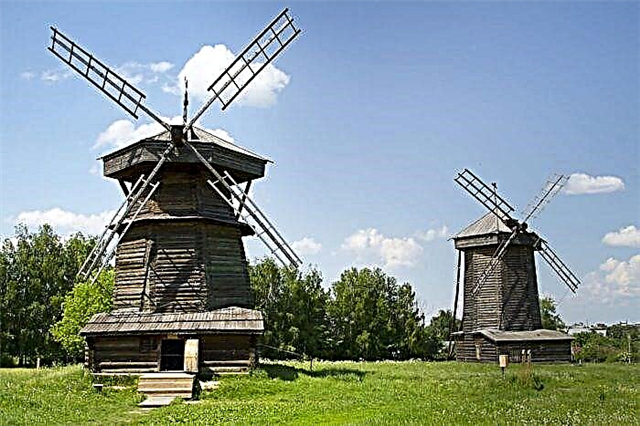
Peasant huts and houses
The residential street of the ancient settlement is represented by four peasant houses brought from different parts of the Vladimir region. First of all, attention is drawn to the two-story house of a wealthy peasant: on the first floor there was a weaving workshop, and on the second there are living quarters. The smaller house belonged to a middle peasant. The authentic furnishings have been recreated inside both houses. Two more huts became premises for the Russian Lubok Museum and a souvenir shop.

Monuments and memorials of Suzdal
Historical and modern monuments adorning the ancient Suzdal.
Monument to Dmitry Pozharsky
Dmitry Mikhailovich Pozharsky was born on the Suzdal land, here he was buried, next to his parents and children. Burial place - Spaso-Efimiev Monastery. There is a monument to the great compatriot near the monastery walls. The bronze bust is installed on a high granite pedestal, the inscription reads: "Dmitry Pozharsky grateful homeland." The square and the street are named after Dmitry Pozharsky.

Monument to the residents of the city who died during the Second World War
The architectural composition in the center of the city is dedicated to fellow countrymen who died at the front. A white four-sided concrete vault is set on a granite pedestal on which a soldier's helmet rests. An eternal flame burns in front of the monument, and a wall with the names of the victims is installed on the side of it. It is located in a public garden on Sovetskaya Square, opposite the Trade Rows. Memorial celebrations are held at the memorial.

Monument to the submariner Alexei Lebedev
Alexey Alekseevich Lebedev, poet and hero-submariner, was born in Suzdal. He died in 1941 in a submarine crash. In memory of him, a street was named in the city, on one of the houses of which a memorial plaque was installed. In 2008, not far from this place, opposite the fire station, a monument was unveiled. He depicts the poet sitting on a stone, in a vest and with a book in his hands. One of the ships of the Baltic Fleet bears the name Aleksey Lebedev.

Monument to Andrei Tarkovsky and his film "Andrei Rublev"
The monument was erected on the territory of the State Customs Committee "Suzdal", at the place where the short story "The Bell" from the film "Andrei Rublev" was filmed. The opening took place in 2017, the year of the director's 85th birthday and the film's 50th anniversary.The composition has a height of 4.5 meters, it is based on three figures depicting Tarkovsky, as well as the characters of the film: the icon painter Andrei Rublev and the foundry worker Borisku, against the background of the bell. The pedestal bears the names of the director and actors who starred in the film.


